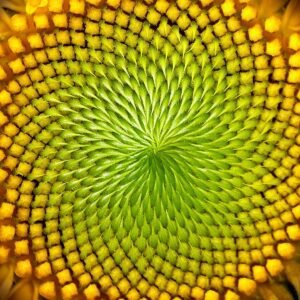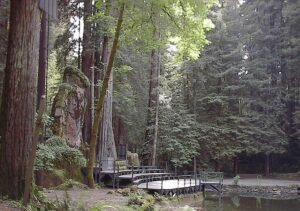Throughout history, individuals have reported experiencing time slips, where they claim to momentarily step into another era, either in the past or the future. These perplexing encounters blur the line between reality and history, leaving those involved questioning their understanding of time itself. Understanding these experiences requires examining both well-documented incidents and exploring theories ranging from quantum mechanics to psychological phenomena.

One of the most famous cases, the Versailles time slip, involved two women in early 20th century France who claimed to have witnessed scenes from the late 1700s while visiting the gardens of the royal palace. Such accounts have fueled interest in what might cause these temporal anomalies. Could these be glimpses into alternate dimensions, or are they simply elaborate stories shaped by psychological misperceptions?
Science attempts to explain these phenomena by exploring how our brains perceive time and reality. Quantum mechanics and theories about parallel universes sometimes offer speculative explanations, while skeptics highlight how the brain can misinterpret sensory information. This blend of mystery, science, and human perception makes time slips a captivating subject that continues to intrigue and challenge our understanding of reality.
Key Takeaways
- Time slips blur the lines between reality and history.
- Notable cases like the Versailles time slip spark interest.
- Science explores time perception and possible explanations.
Exploring the Concept of Time Slips
The phenomenon of time slips intrigues through reports of unexpected transitions into different eras. These slips often involve vivid experiences, puzzling events such as the Versailles time slip, and discussions of psychological aspects like déjà vu and disorientation.
Defining Time Slips
Time slips describe experiences where individuals report a sudden and temporary transition into a different era. Unlike science fiction, these events are narrated as genuine occurrences, often with startling clarity. Witnesses may describe sensations of time distortion, where modern surroundings transform into settings from another period. These experiences often seem unexplainable through traditional scientific methods, leading to debates about whether they represent glimpses into alternate dimensions or mere sensory illusions.
Famous Incidents
Among reported cases, the Versailles time slip stands out prominently. Known as the Moberly-Jourdain incident, it occurred in 1901 when two women visiting Versailles claimed to have encountered people and scenes from the time of Marie Antoinette. Similar accounts often involve detailed descriptions of historical settings, costume, and language from different eras, leaving those who report them disoriented but convinced of their authenticity. The vividness of these experiences generates continuous interest and debate.
Psychological Perspective
Psychologists often explore time slips through the lens of mind phenomena like déjà vu or disorientation. Some theories suggest that these slips might be a form of mental trick, akin to a waking dream, where familiar stimuli trigger vivid historical imagery. Cognitive and perceptual research delves into how memory, stress, or fatigue might cause these intense yet fleeting experiences. While science offers various explanations, the definitive cause of time slips remains an open question, with each theory contributing pieces to the intriguing puzzle.
Historical Accounts and Notable Cases

The phenomenon of time slips encompasses mysterious experiences where individuals claim to witness scenes from the past or future. Here, notable cases like the Moberly-Jourdain Incident at Versailles and the occurrences on Bold Street in Liverpool are explored for their intriguing narratives. These accounts illustrate a blending of history and mysterious perception, sparking ongoing debate and investigation.
The Moberly-Jourdain Incident
The Moberly-Jourdain Incident is a famous time slip reported by two women, Charlotte Anne Moberly and Eleanor Jourdain, in 1901. While visiting the Palace of Versailles in France, they claimed to have encountered scenes reminiscent of the late 18th century.
At the Petit Trianon, they allegedly saw people in period attire and even Marie Antoinette sketching in the gardens. Both women later documented their experience in the book “An Adventure,” which detailed their perceptions of horse-drawn carriages, vintage clothing, and the eerily different ambiance. The incident raises questions about psychological phenomena and whether time slips could involve alternate realities or shared hallucinations.
Bold Street Time Slips
Bold Street in Liverpool is another hotspot for reported time slips. People have recounted sudden shifts to different time periods, often noticing vintage clothing, old-fashioned shop fronts, and street scenes from the past.
In several instances, eyewitnesses described stepping into what felt like the 1950s or 1960s. The experiences are typically brief, yet vivid, leaving individuals startled by their perceived journey through time. Specific accounts include seeing old vehicles and shop signs unfamiliar to modern observers. These occurrences suggest a need for further study into how perceptions could momentarily align with historical settings, challenging our typical understanding of time and reality.
The Scientific Angle

Exploring scientific theories linked to time slips involves examining concepts like quantum mechanics, electromagnetic fields, and multiverse theory. These ideas present potential explanations or curiosities related to time travel experiences.
Quantum Theory and Time Travel
Quantum mechanics, a cornerstone of modern physics, provides fascinating possibilities related to time travel. The principles, such as entanglement and superposition, suggest that particles can exist in multiple states. This raises questions about alternate timelines where time slips might occur within the fluctuating quantum realm.
Additionally, some researchers propose the existence of wormholes, theoretical passages through the space-time continuum. These could potentially facilitate movement between different points in time, though this remains speculative within current scientific understanding.
The Role of Electromagnetic Fields
Electromagnetic fields have been considered as factors influencing time slip phenomena. Researchers theorize these fields may alter human perception or consciousness, possibly leading to temporal disorientation. The interaction between electromagnetic fields and the brain’s electromagnetic activity might induce experiences interpreted as time travel.
Experiments have shown that exposure to certain electromagnetic frequencies can affect memory and perception. This connection invites further investigation into whether specific field intensities or conditions could trigger experiences akin to time slips.
Critiquing Multiverse Theory
Multiverse theory offers another intriguing angle on time slips by suggesting multiple, parallel universes simultaneously exist. Time slips might be perceived as momentary crossovers between these universes. Yet, this theory faces criticism due to a lack of empirical evidence and challenges in scientific validation.
While multiverse theory captivates both scientific and science fiction communities, its speculative nature limits its credibility as a complete explanation for time slips. The absence of concrete proof maintains it as a captivating, albeit debated, topic within the discourse of theoretical physics.
Psychological and Paranormal Explanations

Claims of time slips often intersect with psychological phenomena and paranormal beliefs. Altered states of consciousness can influence perceptions, while investigations into paranormal activity seek to understand experiences outside ordinary reality.
Altered States of Consciousness
Altered states such as dreams, hypnosis, and meditation can affect time perception. Dream-like episodes may involve vivid past or future imagery, contributing to the feeling of a time slip. Hypnosis induces deep focus, sometimes accessing memories or imaginative sequences that feel like reality shifts. Meditation encourages heightened awareness, potentially blurring temporal boundaries and creating experiences akin to stepping out of regular time.
These states can be linked to brainwave changes. Theta waves, for example, are associated with deep relaxation and creativity, which can influence how time is experienced. Understanding these states might provide insight into how and why some individuals report time slips, suggesting a psychological basis for these experiences.
Investigating Paranormal Activity
Paranormal research often seeks to validate accounts of supernatural occurrences, including time slips. Researchers explore phenomena such as hauntings and ghost sightings, looking for evidence of interactions with historical or future events. Techniques like electronic voice phenomena (EVP) recordings and electromagnetic field (EMF) monitoring are used to capture ghostly presence and unusual environmental changes.
While science does not confirm paranormal activity as evidence of other dimensions or times, these investigations remain popular. Enthusiasts believe that certain locations hold temporal impressions, affecting those sensitive to such vibrations. These efforts continue to explore possibilities beyond traditional scientific explanations, inviting debate about the nature of reality and time.
Time Slips in Pop Culture and Literature

Time slips have captured the imagination of writers and filmmakers, making their mark in both literature and modern media. These narratives often explore the boundaries of time and space, posing intriguing questions about the nature of reality and our perceptions.
The Influence of H.G. Wells
H.G. Wells is often credited with popularizing the concept of time travel through his seminal work, The Time Machine. This novel, published in 1895, introduced the idea of a device that could navigate the fourth dimension, inspiring countless stories exploring time slips and alternate realities.
Wells’ influence extends beyond literature, shaping the genre of science fiction by embedding themes of temporal exploration into popular culture. The narrative technique of characters experiencing events outside their own timeline can be seen as a precursor to the modern concept of time slips. Wells’s work continues to inspire writers and directors to explore these phenomena in innovative ways.
Portrayals in Modern Media
Time slips are frequently depicted in films, books, and TV shows, often blending with elements of urban legends. Movies like Back to the Future use the concept to explore paradoxes and the impact of altering historical events. TV series such as Doctor Who delve into time travel, presenting time slips as adventures across both history and the future.
Literature today continues to draw on time slip narratives, integrating them into diverse genres. These stories engage readers by blending real historic events with fictional elements of fantasy and speculation. The interplay of past, present, and future captivates audiences, encouraging them to ponder the mysteries of time.
Frequently Asked Questions
Time slips, where individuals report brief journeys into another era, are intriguing phenomena. Historical reports, scientific theories, and psychological aspects all play a role in understanding these experiences. Literature often portrays time slips with profound effects on characters, offering a unique perspective on the concept.
What are some renowned historical reports of time slip occurrences?
Several well-known stories have captured public interest. The Versailles time slip involves two women claiming to have encountered figures from the past while visiting the palace grounds. Another famous tale is from the Liverpool time slip, where a man reported stepping into a different time period while shopping.
How have time slip experiences been documented or investigated?
Reports of time slips are often documented through personal testimonies. Investigations may involve interviews with the individuals involved and attempts to verify any historical accuracy in their descriptions. Although scientific studies are limited, researchers have explored these accounts for possible logical explanations.
What scientific explanations have been proposed for time slips?
Various theories suggest natural phenomena might explain time slips. Some propose the presence of magnetic fields or geological activity affecting human perception. Scientists also explore connections between time slips and known cognitive processes to uncover insights into the possible mechanisms behind these events.
Could quantum physics provide a basis for understanding time slip phenomena?
Quantum physics offers intriguing possibilities but remains largely theoretical concerning time slips. Concepts like quantum entanglement and superposition may hint at ways time could behave differently under extraordinary conditions, although current scientific understanding provides no concrete evidence linking quantum mechanics to time slips.
What psychological factors might contribute to perceived time slip experiences?
Psychological explanations focus on environmental and mental factors that could lead to time slip perceptions. Stress, fatigue, or heightened emotional states might affect cognition. Memory and perception errors are also considered as contributing elements, influencing how individuals interpret unusual experiences.
In literature, how are time slip events typically characterized and their effects on characters depicted?
Time slip events in literature often serve as pivotal plot devices. Characters who experience time slips may encounter historical figures or events, impacting their personal growth or understanding of reality. These narratives explore themes of destiny, history, and identity, highlighting the transformative potential time slips represent.


